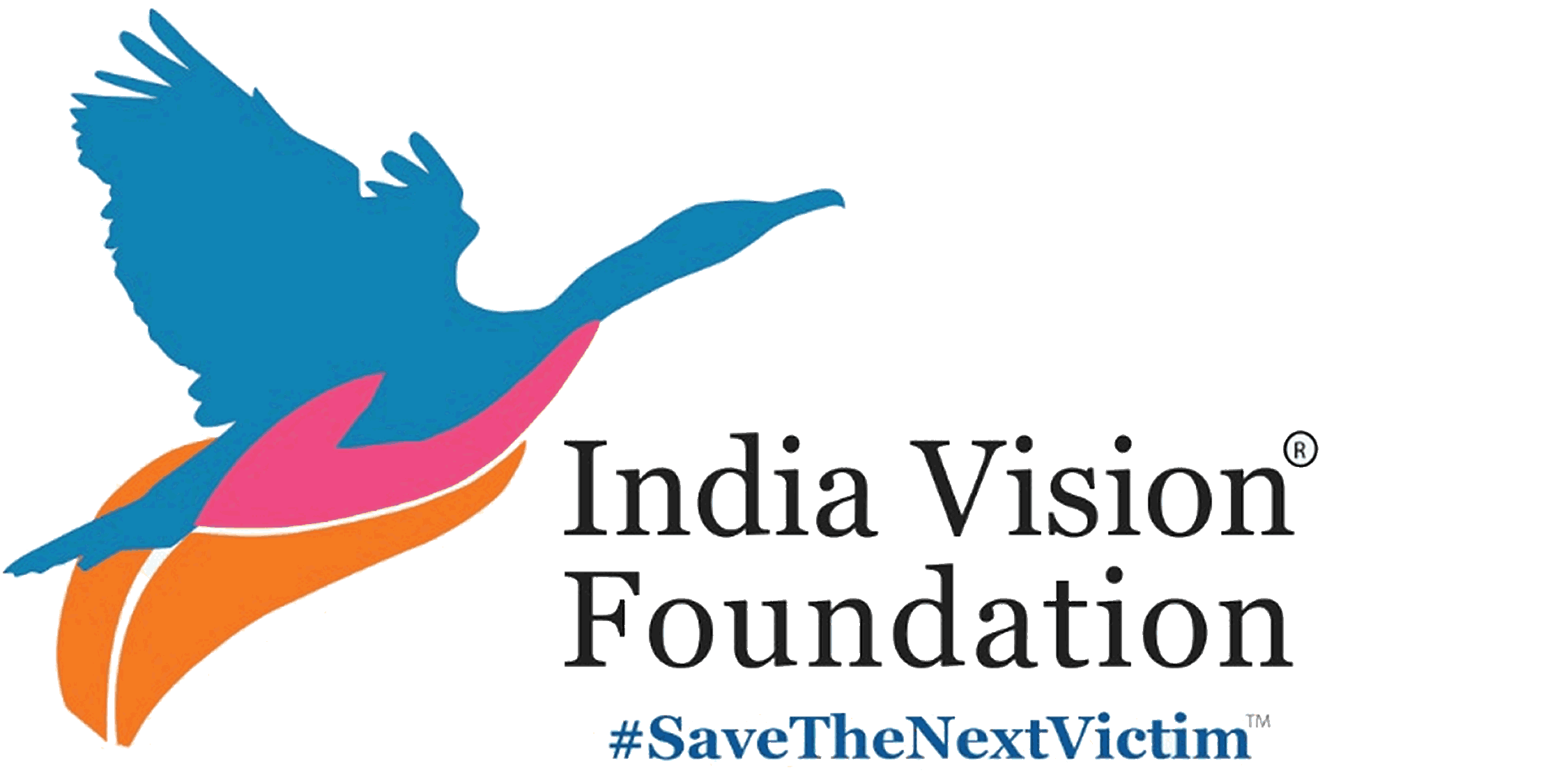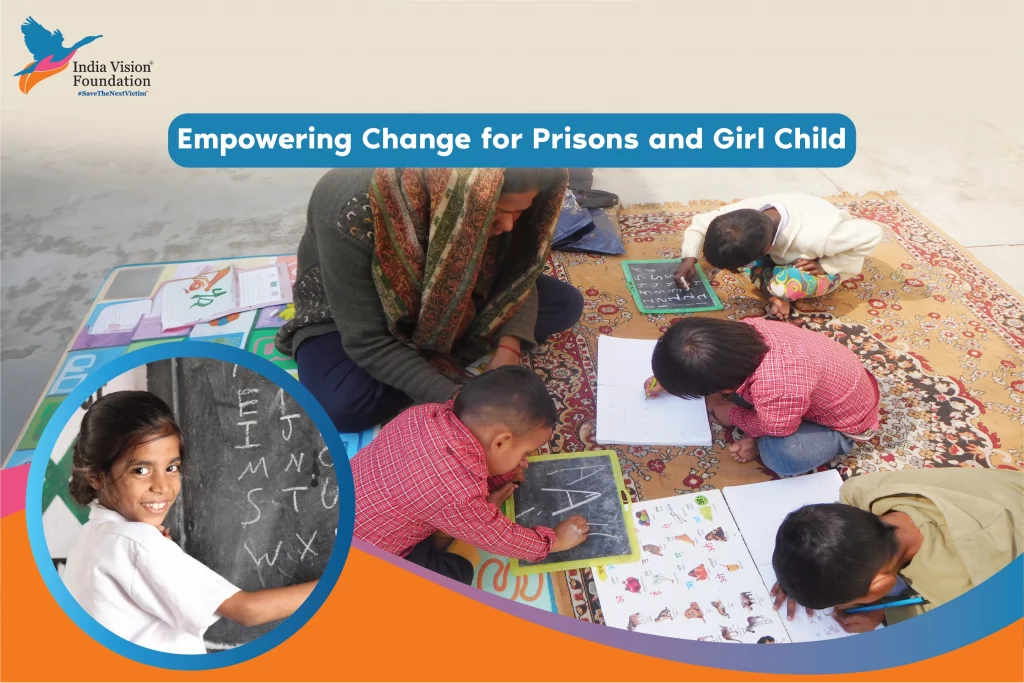In a country as diverse and complex as India, issues like prison reform and the empowerment of marginalised groups, particularly the girl child, often take a backseat amidst the hustle and bustle of daily life.
However, organizations like the India Vision Foundation are working tirelessly to bring about significant change in these areas, aiming for a more just and equitable society.
Understanding the Challenge:
Prison Reform:
India’s prisons are often overcrowded, understaffed, and plagued by issues such as poor sanitation, lack of healthcare, and systemic corruption. Moreover, the rehabilitation and reintegration of inmates into society post-incarceration are major challenges.
The cycle of poverty and crime perpetuates as many individuals, once released, struggle to find legitimate means of livelihood, leading them back into the vicious cycle of crime and imprisonment.
Empowerment of the Girl Child:
Despite progressive legislation and social initiatives, gender inequality remains a significant issue in India, particularly concerning the girl child. Factors such as gender-based discrimination, limited access to education, early marriage, and child labour perpetuate a cycle of disempowerment for millions of girls across the country.
Breaking this cycle requires concerted efforts on multiple fronts, including education, advocacy, and community engagement.
The Role of India Vision Foundation:
Prison Reform Initiatives:
The India Vision Foundation recognises the urgent need for comprehensive prison reform to address the systemic issues within India’s correctional facilities. Through various initiatives, India Vision Foundation works towards:
- Legal Aid and Counselling: India Vision Foundation provides legal aid and counselling services to inmates, ensuring they have access to justice and fair treatment within the legal system.
- Rehabilitation Programs: The foundation runs rehabilitation programs aimed at skill development, education, and mental health support for inmates, preparing them for reintegration into society upon release.
- Advocacy and Awareness: India Vision Foundation engages in advocacy efforts to raise awareness about the challenges facing prisoners and promotes policy reforms aimed at improving the conditions within prisons and enhancing the prospects of rehabilitation.
Empowerment of the Girl Child:
Empowering the girl child is central to India Vision Foundation’s mission of creating a more inclusive and equitable society. The foundation’s initiatives in this area include:
- Education Programs: India Vision Foundation runs educational programs aimed at increasing access to quality education for girls, especially in rural and underserved communities. These programs not only focus on academic learning but also emphasize life skills and empowerment.
- Health and Nutrition: India Vision Foundations works to improve healthcare and nutrition access for girls, recognising the crucial role these factors play in their overall well-being and empowerment.
- Community Engagement: India Vision Foundation engages with local communities to challenge gender norms and promote the value of girls’ education and equal opportunities. By involving parents, community leaders, and other stakeholders, India Vision Foundation strives to create a supportive environment for the girl child.
Impact and Challenges:
While India Vision Foundation’s efforts have undoubtedly made a positive impact, significant challenges remain. Persistent social norms, bureaucratic hurdles, and resource constraints pose ongoing challenges to the foundation’s work.
Certainly, let’s delve deeper into the impact and challenges faced by the India Vision Foundation in its endeavours to empower change for prisons and the girl child:
Impact:
- Legal Aid and Counselling Services: India Vision Foundation’s provision of legal aid and counselling services has empowered inmates to navigate the complexities of the legal system, ensuring fair treatment and access to justice.
- Rehabilitation Programs: The foundation’s rehabilitation programs have equipped inmates with essential skills and education, increasing their chances of successful reintegration into society post-release.
- Education Initiatives: India Vision Foundation’s educational programs for the girl child have expanded access to quality education, empowering girls with knowledge and skills to pursue their aspirations.
- Community Engagement: India Vision Foundation’s efforts to challenge social norms and engage communities have fostered greater awareness and support for marginalised groups, contributing to a more inclusive society.
- Health and Nutrition Support: Through health and nutrition interventions, India Vision Foundation has improved the well-being of marginalised communities, including female inmates and underserved girls.
Challenges:
- Social Norms: Deep-rooted social norms, including gender biases and stigma associated with incarceration, present persistent challenges to India Vision Foundation’s efforts to empower marginalised groups.
- Bureaucratic Hurdles: Bureaucratic red tape and administrative barriers hinder the implementation of effective interventions, slowing down progress and limiting the reach of India Vision Foundation programs.
- Resource Constraints: Limited funding and resources pose significant challenges to India Vision Foundation’s ability to scale up its interventions and reach a broader audience, particularly in underserved regions.
- Scale of the Issues: The vast scale of issues such as prison reform and gender inequality requires comprehensive, long-term solutions that extend beyond the capacity of any single organization, necessitating collaboration with multiple stakeholders.
- Societal Resistance: Resistance from entrenched interests and conservative elements within society can impede efforts to bring about meaningful change, requiring strategic advocacy and engagement strategies.
- Complexity of the Issues: Addressing systemic issues such as prison reform and gender inequality involves navigating complex socio-economic, cultural, and political factors, requiring multifaceted approaches and sustained commitment.
- Access to Remote Areas: Limited access to remote and marginalised communities poses logistical challenges for implementing and monitoring India Vision Foundation’s programs effectively.
- Fragmented Efforts: Lack of coordination and collaboration among stakeholders working in related fields can lead to fragmented efforts and duplication of resources, undermining the overall impact of interventions.
Overcoming Challenges:
- Strategic Partnerships: Collaborating with government agencies, NGOs, and other stakeholders can leverage resources and expertise, enhancing the effectiveness of India Vision Foundation’s interventions.
- Advocacy and Awareness: Continued advocacy efforts to raise awareness about the importance of prison reform and gender equality can mobilize public support and pressure policymakers for change.
- Innovation: Embracing innovative approaches, such as technology-driven solutions and community-led initiatives, can help overcome resource constraints and reach marginalised communities more effectively.
- Capacity Building: Investing in the capacity building of staff and local partners can enhance the sustainability and scalability of India Vision Foundation’s programs, strengthening their long-term impact.
- Policy Engagement: Engaging policymakers and advocating for policy reforms that address systemic barriers to empowerment can create an enabling environment for change.
- Monitoring and Evaluation: Implementing robust monitoring and evaluation mechanisms can help track progress, identify challenges, and adapt strategies accordingly, ensuring the effectiveness of the India Vision Foundation interventions.
The Way Forward:
Despite the challenges, the work of the India Vision Foundation serves as a beacon of hope, demonstrating that positive change is possible even in the face of daunting obstacles. Moving forward, it is imperative for stakeholders across sectors – including government agencies, civil society organizations, and the private sector – to collaborate closely to address these complex issues comprehensively.
Key Areas for Action:
- Policy Reforms: Advocating for policy reforms to improve prison conditions, enhance rehabilitation programs, and promote gender equality should remain a priority for India Vision Foundation and other stakeholders.
- Community Mobilization: Strengthening community engagement efforts to challenge harmful norms and foster support for marginalised groups, including prisoners and the girl child, is crucial for sustained progress.
- Capacity Building: Investing in the capacity building of individuals and institutions working in the fields of prison reform and gender empowerment can amplify the impact of interventions and foster long-term sustainability.
- Research and Innovation: Encouraging research and innovation to identify effective strategies and interventions for addressing the root causes of prison overcrowding, gender inequality, and related issues is essential for informed decision-making and program design.
Final say,
The India Vision Foundation’s commitment to empowering change for prisons and the girl child exemplifies the transformative potential of grassroots initiatives in addressing complex societal challenges. By continuing to advocate, innovate, and collaborate, India Vision Foundation and its partners can contribute significantly to building a more just, inclusive, and equitable society for all.


